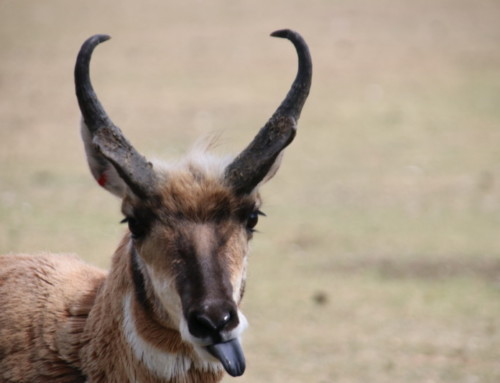Clever…tough and wiry…adaptable…intelligent…opportunistic…this is the Trickster in some Native lore and even on TV, as the hapless Wile E. Coyote. This animal’s scientific name is Canis latrans, meaning “barking dog”. The common name, Coyote, comes from the Aztec word coyotl. In some areas it is known as the brush wolf, American jackal, or prairie wolf. All the names and adjectives, whether favourable or derogatory, serve to describe a most engaging creature.
This medium sized member of the dog family is 61 cm at the shoulder as an adult, 105 – 132 cm long and weighs 9 – 23 kg. Coyotes have adapted to almost every habitat in North America. Originally found mainly in the American southwest and on the Great Plains into Mexico, their range has expanded, partly due to the extirpation of the wolf. They now range to the East Coast and west and north through Canada and to Alaska and south through Mexico.
Coyotes are fast — up to 48 km/hr in a dead run (faster than both the Roadrunner and the Energizer Bunny). They will hunt alone or together or, occasionally, they will take advantage of another species such as the badger. In the latter case, badgers have been seen to dig into a ground squirrel or prairie dog burrow while a coyote waits expectantly at an exit hole and snaps up the escaping rodent.
Coyotes will eat anything from rodents, rabbits, carrion (the majority of their diet) to watermelons and insects. Many, of course, will get into the habit of raiding farms for chickens, lambs, and domestic pets. In many Western cities they have adapted to living within the city. The coyote is monogamous and will have five to six young every spring. Both parents share in the care of the pups. As a species, the coyote has resisted attempts to trap, poison and blast it to oblivion. In fact, in most areas their populations are increasing due to human impact on their habitat and lack of large predators.

